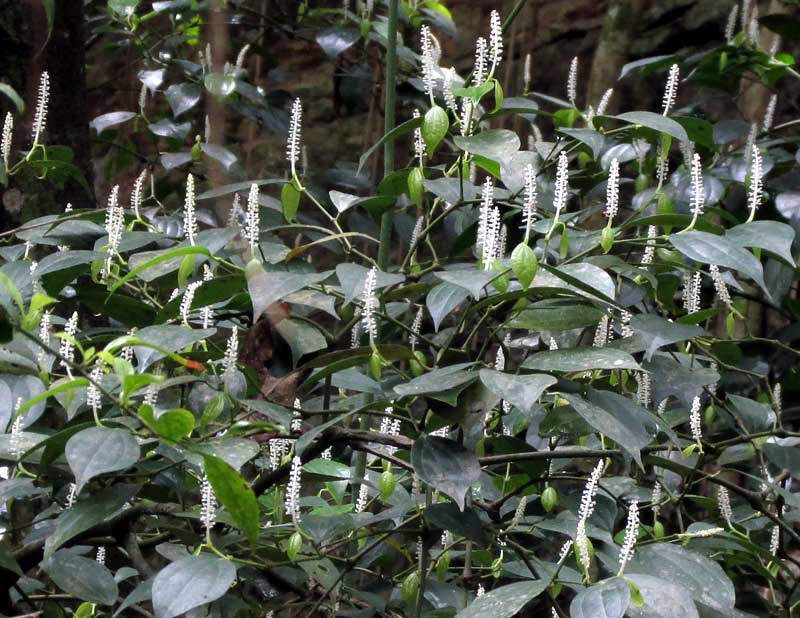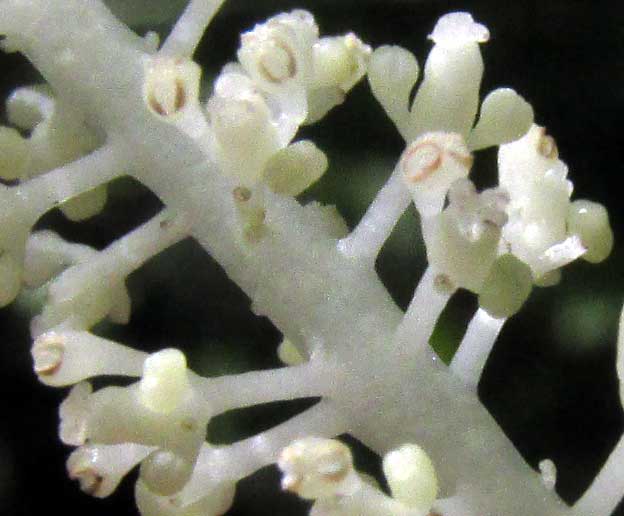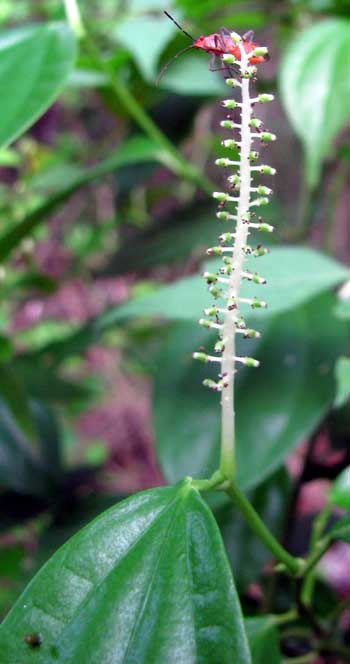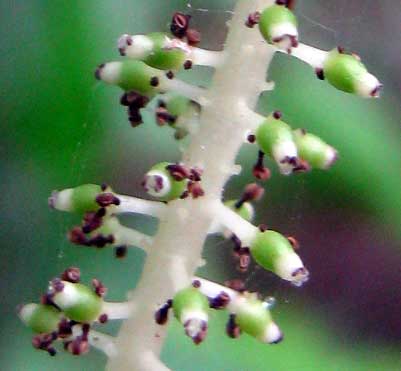Excerpts from Jim Conrad's
Naturalist Newsletter
from the June 26, 2016 Newsletter issued from Hacienda Chichen Resort beside Chichén Itzá Ruins, central Yucatán MÉXICO
PIPER NEESIANUM AT ITS FLOWERING PEAK

At first I identified this as Piper yucatanense, despite the spikes and flowers now looking quite right. Its pure-white flowering spikes simply glow in the forest's shadowy understory where the species lives, something I've never seen with P. yucatanense. At the top of this page you can see a small part of such a tree.
This tree's flowers were in a different state of development from than those photographed earlier. Below, you can see the current flowers:

In that picture, each flower stands atop its own stalk, or pedicel. The center of each flower is occupied by an oblong ovary topped with three, short, curving stigmas. At the base of each ovary arise two or three stamens. You can see two oval, dark-rimmed anther slits atop each stamen's filament.
from the May 9, 2010 Newsletter issued from Hacienda Chichen Resort beside Chichén Itzá Ruins, central Yucatán, MÉXICO; limestone bedrock, elevation ~39m (~128ft), ~N20.676°, ~W88.569°
PIPER NEESIASNUM FLOWERING

Along a shadowy forest trail I encountered a head-high bush bearing the remarkable structure shown above. It was easy to identify this a member of the very distinctive and common (in humid American tropics) black pepper genus, Piper, but it certainly was an unusual species. First, you can see that in this species' leaves several strong veins radiate from the leaf bottom. In the leaves of most plants, including Pipers, there's a single midrib running down the blade's center, and secondary veins branch from that.
The most remarkable feature, however, was the erect flower cluster with its individual tiny flowers on stalks. Not many of the genus Piper's hundreds of species produce stalked flowers. A while back we met the Rough-leaved Pepper, a common Piper species here with typical flower spikes, which you can compare at www.backyardnature.net/yucatan/piper-am.htm.

Above you see a close-up of the stalked flowers. The green, spherical items are the ovaries, which will develop into black-pepper fruits -- peppercorns such as those you buy for grinding in your peppermill. Commercial peppercorns are produced by a different Piper species, however, Piper nigrum, a native of tropical Asia.